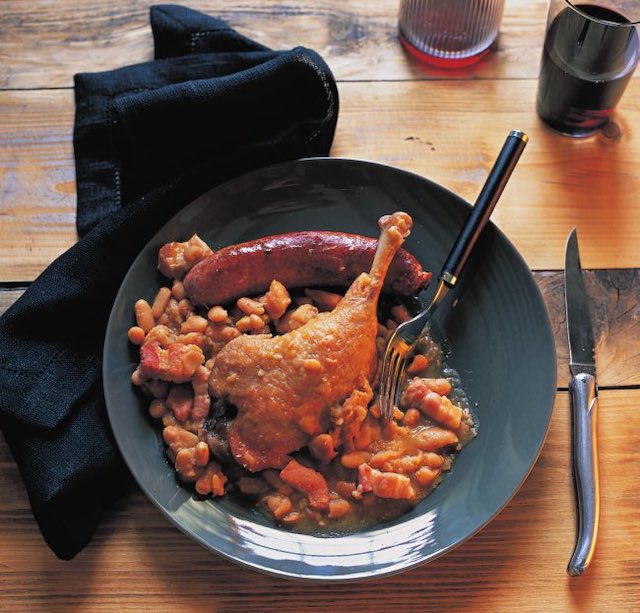Easy (and Very Lazy) Cassoulet


For 20 years, Belfast-born Trish Deseine has been cooking in her fabulous French kitchens, from a city pad in Paris to her country kitchen in the Vallée de la Vaucouleurs, between Paris and Rouen. In her book, she explores the extraordinary heritage of French cooking, from classic regional dishes to the latest cuisine du jour, offering her own personal take on the rich source of recipes, dividing them into mood and desire instead of the usual geographic sections.
Here is one of her favourite dishes…
Cassoulet is really an on-location dish, something to enjoy in Toulouse, Castelnaudary or Carcassonne, with your head bowed in respect for tradition and folklore. There are many versions of the dish, whose names comes from the cassolo or clay pot in which it was originally cooked, and all contain white beans or lingots, plus varying combinations of sausage, duck and goose confit, roast mutton, pork and sometimes even partridge.
However, much as I adore eating cassoulet at other people’s tables, I am not one for making these two-day, labour-of-love, steeped in history dishes, especially when they involve the overnight soaking of pulses. What’s more, I have never seen a recipe for cassoulet that fills less than two pages. I prefer to speed things up a bit, which is perfectly possible as the French produce several of the necessary ingredients in tinned and bottled form – but do not be tempted to use anything that is not French.
Ingredients (serves 4)
150g bacon lardons
2 Toulouse sausages
1 onion, finely chopped
1 leek, finely chopped
olive oil (optional)
750g tin French haricots or lingots in tomato sauce
3 legs of confit of duck
Method
1. Heat a heavy-based frying pan. Add the bacon lardons and colour slightly, then add the sausages and fry gently until they are cooked through.
2. Sweat the onion and leek in the same pan, adding some oil if necessary.
3. Pour in the beans and bring to a slow simmer.
4. Heat the duck, in its fat, in a separate pan, drain and add to the sausages and beans.
5. Transfer to a clay dish and serve immediately. Or, as a nod to tradition, pop it into the oven at 180ºC / 350ºF / gas mark 4 or under the grill and let the traditional crust form.
Originally published in FrenchEntree Magazine
Share to: Facebook Twitter LinkedIn Email
By FrenchEntrée
Leave a reply
Your email address will not be published. Required fields are marked *



